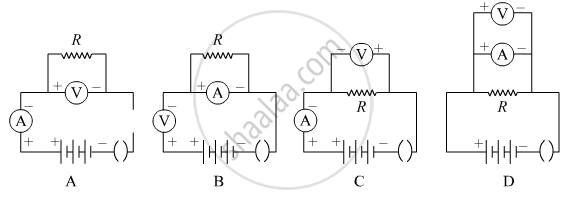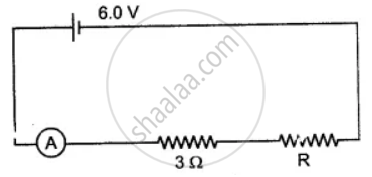Advertisements
Advertisements
Question
Keeping the potential difference constant, the resistance of a circuit is halved. By how much does the current change?
Solution
From Ohm's law we have:
V/I = R
Or I = V/R
Now, according to the question, the resistance of the circuit is halved and the potential difference is constant.
i.e. R' = R/2
and V' = V
Then the new current is given by:
I' = V'/R'
= V/R/2
= 2V/R
= 2I
It is clear from the above statement that the current becomes double.
APPEARS IN
RELATED QUESTIONS
Name a device that helps to maintain a potential difference across a conductor.
The unit for measuring potential difference is:
What is the ratio of potential difference and current known as?
If the potential difference between the end of a wire of fixed resistance is doubled, by how much does the electric power increase?
Which one of the following is the correct set-up for studying the dependence of the current on the potential difference across a resistor and why?

Explain why potential difference is always less than the e.m.f. of a cell?
What do you understand by the resistance of a wire?
The figure shows a circuit. When the circuit is switched on, the ammeter reads 0.5 A.

(i) Calculate the value of the unknown resistor R.
(ii) Calculate the charge passing through the 3 Ω resistor in 120 s.
(iii) Calculate the power dissipated in the 3 Ω resistor.
If P and V are the power and potential of device, the power consumed with a supply potential V1 is:
What is the measure of the work done on the unit positive charge to bring it to that point against all electrical forces?
